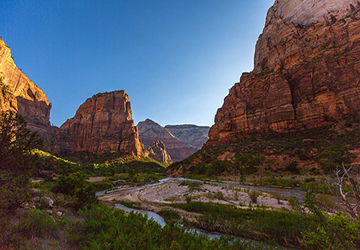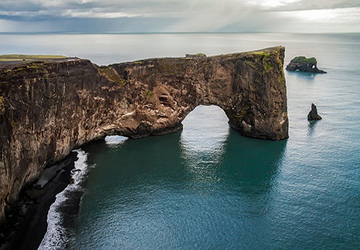Have you switched from plastic straws and plastic bags to biodegradable paper straws and cloth bags? What should your next step be to protect your fragile ecosystem? Start traveling responsibly to help save the ecosystem further!
With the rise in tourism in the past few decades, learning how to travel responsibly to sustain our complex and fragile ecosystem has become increasingly important. It is essential to travel sustainably in areas with fragile environments so they can be preserved for future generations. Unfortunately, many tourists still need to learn about their actions' impact on the environment. This is where we come in!
This blog will explore what makes an ecosystem fragile and the challenges tourists face and give practical tips on greener travel.

Is our Ecosystem Fragile?
The ecosystem is labeled fragile once it is susceptible to temperature and environmental changes. In recent years, certain human activities have resulted in the loss of biodiversity, increased greenhouse emissions, and declined essential ecosystems, such as rainforests and coral reefs. These impacts increase ecosystem fragility and reduce the likelihood of nature's survival.
Therefore, it is essential to promote responsible tourism practices such as those listed below. By reducing our impact on fragile ecosystems, we can protect the natural wonders for future generations.
How is Your Tourism Impacting Fragile Ecosystems?
Do you indulge in casual fishing at your nearest coastline for harmless fun? Unfortunately, this recreational practice might not be completely harmless. Activities like these may result in unintentional overfishing, poaching, and irreversible destruction of habitats. Tourism-related recreational sports like boating and snorkeling may contribute to water pollution and disrupt coral reefs.
Masses of tourists, particularly in areas unequipped to handle such populations, pressure the fragile ecosystem. Greenhouse gas emissions by these tourists in the form of transportation, accommodations, and activities that deplete natural resources can severely impact fragile ecosystems. This is where the need to travel responsibly comes in. How to travel sustainably? Read on ahead to find out!
8 Tips on How to Travel Responsibly
Before learning how to travel greener, I ask questions like how I can be a responsible tourist. What should I do to protect our fragile ecosystem? This is the primary step towards making a real difference in your efforts to preserve the fragile ecosystem.
With the following tips, you will be ready to embark on the sustainability journey.
Prepping for Your Trip
Before you book tickets to the destination you have in mind, do your homework on which places prioritize sustainability. Are they investing in preserving their wildlife, marine habitats, and cultural heritage? Do they let locals promote their businesses at tourist destinations?
Some countries like Bhutan and Namibia have strict environmental protection policies. Pakistan has severe fines for environmental pollution, such as littering, and supports preserving its culture at tourist spots. Check out Green Destinations for a list of sustainable travel destinations!
Getting there
Try putting thought into your mode of travel. Can you think of any environmentally friendly means to reach your destination? Your destination is close to home. This way, you can use public transportation, biking, or other means that leave a minimal carbon footprint. Not only would you be protecting your fragile ecosystem, but it can also be a unique way to experience your trip to the destination.
However, if you must fly to your destination, choose energy-efficient aircraft that offers direct flights, so less fuel is consumed.

Finding Eco-friendly Lodging
Look for hotels, lodges, or camps that use sustainable practices with minimal environmental impact. These may include recycling, energy-efficient lighting, and water-saving techniques.
Supporting Locals
When it comes to food, are you wondering how to travel sustainably? Choose to eat at a local restaurant and shop at local markets! Getting to know their culture will be a unique experience, and you will get a chance to support the local economy. Once the local businesses start doing well, there will eventually no longer be a need to import goods from other regions, reducing the carbon footprint.
Shopping Carefully
When shopping at a tourist destination, look for businesses that use eco-friendly materials to prioritize sustainability and environmental protection. Avoid products that harm the environment, such as those made of coral, sea shells, or rare wood species. Furthermore, consider purchasing products that support conservation efforts, such as souvenirs that donate a portion of the profit to local conservation organizations.
Say no to Plastics
It is essential to consider the packaging once you have bought local goods. Choose minimal packaging or one made from recyclable material. Refuse plastic bags, straws, and other single-use plastic products. Try carrying your metal straws and paper/cloth bags, as these can be reused.
Just Look, Don't Touch
Whether you go sightseeing at a zoo or in the wild, refrain from touching, feeding, or playing with the animals you encounter. Please read up on the destinations and whether they fulfill animal rights. Avoid going to places where animals are exploited or harmed at the expense of tourism. There might be tourist attraction spots that allow you to touch the animals, but you should avoid a close encounter with them as it may harm you and the animals. You might feed the animal something you are not supposed to or might contract a deadly disease!
Enjoy Sustainable Activity
Lastly, remember to have sustainable fun! You went on a recreational trip, after all. While exploring new places, indulge in a fun yet moderate activity with zero carbon emissions, such as biking, hiking, skiing, surfing, or kayaking. You may find a spot where fishing is permissible and does not deplete marine life. With so many activities to choose from, you are likely to discover unique locations that are worth a sight!
Takeaway
As travelers, we are responsible for minimizing our environmental impact by choosing eco-friendly accommodations, modes of transport and minimizing waste. Making informed choices and supporting businesses that prioritize environmental safety when planning your trip is essential. By following these tips, we can enjoy these areas' beauty while positively impacting the environment and the local communities.
Now that you know how to travel greener, let us all do our part in promoting responsible tourism practices and protecting our fragile ecosystem.


